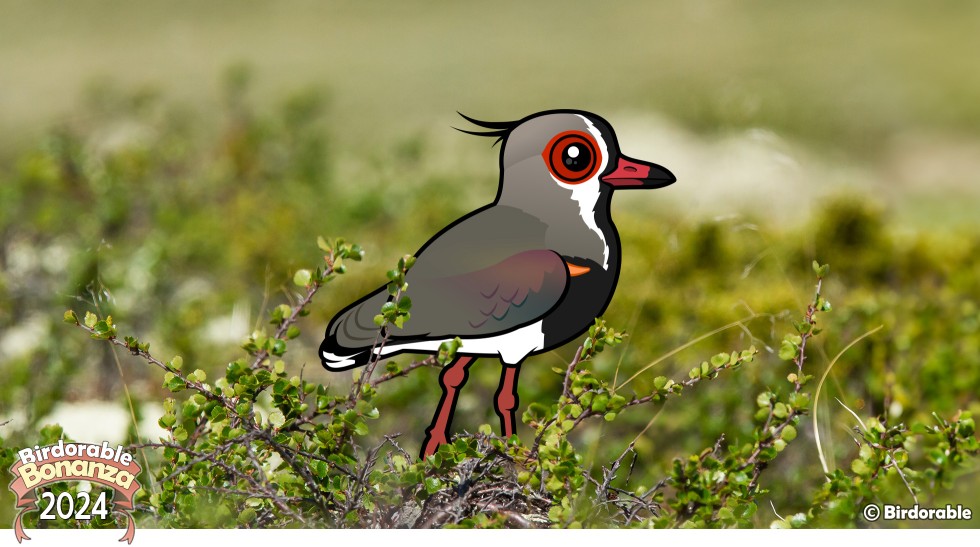2024 Birdorable Bonanza Bird #4
Meet the Southern Lapwing: A Loud and Colorful Defender

Today's new bird is another southern friend, this one native to South America: its the Southern Lapwing!
The Southern Lapwing is a striking and charismatic bird found across a wide range in South America, known for its bold appearance and feisty personality. Found in a variety of habitat types, from wetlands and grasslands to urban parks and agricultural fields, this adaptable species has become a familiar sight across its range. Its scientific name, Vanellus chilensis, hints at its geographic roots, as the species was first described in Chile.
With a length of 13 to 15 inches, Southern Lapwings are medium-sized shorebirds. Their plumage is an elegant blend of gray, black, and white, with a glossy greenish-purple sheen on their wings. A black crest, red eyes, and a distinctive black “bib” on their chest add to their striking look. Their long, slender pinkish-red legs and sharp spurs on their wings make them well-equipped for both foraging and defense.
One of the most distinctive features of the Southern Lapwing is its loud and persistent call. The shrill call serves as both a territorial warning and an alarm to alert others of potential threats. Southern Lapwings are highly territorial and will aggressively defend their nesting sites, even chasing away much larger animals, including humans! They are fearless in the face of danger, sometimes swooping at intruders or using their wing spurs as a last resort.

Southern Lapwing by Bernard DUPONT [CC BY-SA 2.0]
Southern Lapwings are ground-nesting birds, typically laying their eggs in shallow scrapes lined with small stones or grass. These nests are often well-camouflaged, blending seamlessly with their surroundings. Both parents share the responsibility of incubating the eggs and fiercely guarding their territory. When predators approach, the birds may use distraction displays, feigning injury to lure threats away from their nest.
Their diet consists primarily of insects, worms, and other invertebrates, which they forage for by walking steadily across open ground. They may also eat seeds, especially during dry seasons when insects are less abundant. Their adaptable feeding habits are one of the reasons why Southern Lapwings thrive in such diverse habitats.
Although they are not currently threatened, habitat loss and climate change pose potential challenges to the species. However, their adaptability to modified environments, including urban areas, has helped them maintain stable populations.
The Southern Lapwing’s combination of striking looks, bold behavior, and loud calls makes it one of South America's most iconic birds. Whether defending its nest or calling across a grassy field, this bird commands attention wherever it goes.
Birdorable Southern Lapwing Gifts
Tomorrow's new bird is another crested cutie! This little cavity-nesting species is known for being active, even hanging upside-down in tree branches while it forages for food. Can you guess this little one, named for its facial pattern? 🤔













